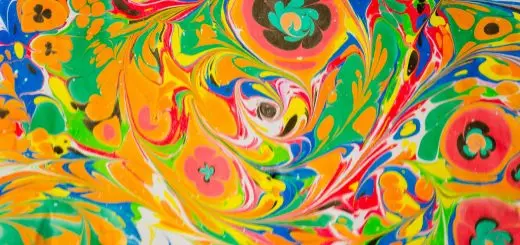The Māori Hei Tiki: Cultural Artifact and Symbol of Protection

Looking for more amazing products? Check out our online store and explore our collection here! Happy shopping!
Before diving in, please note: This post is for informational purposes only. If you’d like to know more about how we approach topics, feel free to check out our friendly Disclaimer Page.
Hey there, amazing readers! 
We’re committed to delivering quality posts, and your support (even just sticking around despite the ads) means everything to us. So, bear with us, and thanks for helping us keep the good vibes rolling. Now, on to the fun stuff!
TRANSLATE BUTTON AT THE END OF THE ARTICLE
A Quick Overview: The Māori Hei Tiki: Cultural Artifact and Symbol of Protection
The Māori Hei Tiki is a revered cultural artifact of the indigenous Māori people of New Zealand.
This small, intricately carved pendant is characterized by its humanoid form, with a large head and small body, often depicted with hands resting on the stomach.
The Hei Tiki holds deep cultural significance and is considered a symbol of protection, fertility, and connection to one’s ancestors.
Its history dates back centuries, and it continues to be a prominent feature in Māori art and culture.
The Māori Hei Tiki: Introduction and History
The Hei Tiki has a rich history within Māori culture, with its origins believed to be rooted in the mythological figure Tiki, who is considered the first human in Māori legend.
The pendant is thought to represent the human form and is often associated with the creation of life.
Historically, the Hei Tiki was worn as a talisman by Māori elders and leaders, symbolizing their status and protection from harm.
Over time, the Hei Tiki has become a symbol of cultural identity and pride for the Māori people.
Origins and Meaning of the Hei Tiki
The name "Hei Tiki" comes from the Māori words "hei," which means to wear or adorn, and "tiki," which refers to the first man in Māori mythology.
The pendant is traditionally made from materials such as greenstone (pounamu), bone, or wood, with each material carrying its own symbolic significance.
The intricate carvings on the Hei Tiki often include motifs representing life, fertility, protection, and spiritual connection.
The Cultural Significance of the Hei Tiki
The Hei Tiki holds immense cultural significance for the Māori people, representing their identity, heritage, and connection to their ancestors.
It is often passed down through generations as a treasured family heirloom, symbolizing protection and good fortune.
The wearing of a Hei Tiki is seen as a way to honor one’s lineage and heritage, carrying the wisdom and strength of past generations.
Traditional Materials Used in Crafting
Traditionally, the Hei Tiki was crafted from materials found in nature, such as greenstone, bone, or wood.
Greenstone, also known as pounamu, is a particularly revered material among the Māori people, symbolizing strength, resilience, and spiritual connection.
Bone and wood were also commonly used in crafting Hei Tiki, each material carrying its own unique symbolism and significance.
Different Styles and Variations
There are various styles and variations of the Hei Tiki, each reflecting the unique artistic interpretations of different Māori tribes and carvers.
Some Hei Tiki are more abstract, while others are more realistic in their depictions of the human form.
Different regions of New Zealand are known for their distinct styles of Hei Tiki, with variations in size, shape, and design elements.
Symbolism of the Hei Tiki Design
The design of the Hei Tiki is filled with symbolism, with each element holding specific meanings for the Māori people.
The large head is thought to represent wisdom and knowledge, while the hands resting on the stomach symbolize fertility and protection.
The overall humanoid form of the pendant is believed to connect the wearer to their ancestors and the spirit world, providing guidance and support.
Use of Hei Tiki in Māori Culture
The Hei Tiki is used in various cultural ceremonies and events within Māori society, such as weddings, funerals, and other significant milestones.
It is also worn as a protective amulet during times of transition or challenge, serving as a source of strength and connection to one’s heritage.
The Hei Tiki is a visible symbol of Māori identity and pride, representing the enduring spirit of the indigenous people of New Zealand.
Hei Tiki as a Symbol of Protection
One of the most significant meanings of the Hei Tiki is its role as a symbol of protection.
The pendant is believed to ward off negative energy, evil spirits, and harm, offering the wearer a sense of security and well-being.
By wearing a Hei Tiki, Māori people seek to invoke the protective powers of their ancestors, ensuring their safety and prosperity in all aspects of life.
Modern Interpretations and Adaptations
In modern times, the Hei Tiki continues to be a popular symbol in Māori art and culture, with contemporary artists creating new interpretations and adaptations of the traditional pendant.
Some artists incorporate elements of urban street art, pop culture, and modern technology into their Hei Tiki designs, reflecting the evolving nature of Māori identity and creativity.
Despite these modern adaptations, the core symbolism and cultural significance of the Hei Tiki remain deeply respected and honored by the Māori people.
Controversies Surrounding the Hei Tiki
While the Hei Tiki is a cherished cultural artifact for the Māori people, it has also been subject to controversies and debates.
Some critics argue that the commercialization and appropriation of the Hei Tiki by non-Māori individuals and companies diminish its cultural significance and authenticity.
There have been instances of mass-produced, culturally insensitive versions of the pendant being sold as souvenirs, leading to concerns about cultural misappropriation and disrespect.
Collecting and Preserving Hei Tiki
For collectors and enthusiasts, acquiring and preserving Hei Tiki requires a deep respect for Māori culture and traditions.
Authentic Hei Tiki pendants are highly valued and sought after, with original pieces often passed down through generations within Māori families.
Proper care and preservation techniques are essential to ensure the longevity and integrity of these cultural artifacts, including storing them in a cool, dry place and avoiding exposure to harsh chemicals or sunlight.
Conclusion: The Enduring Legacy of the Hei Tiki
In conclusion, the Māori Hei Tiki stands as a powerful symbol of cultural identity, protection, and connection to one’s ancestors.
This ancient artifact continues to hold immense significance for the Māori people, serving as a tangible link to their rich heritage and traditions.
As a revered symbol of protection and fertility, the Hei Tiki embodies the enduring spirit and resilience of the indigenous people of New Zealand, reminding us of the importance of honoring and preserving cultural artifacts for future generations to come.

The Enlightenment Journey is a remarkable collection of writings authored by a distinguished group of experts in the fields of spirituality, new age, and esoteric knowledge.
This anthology features a diverse assembly of well-experienced authors who bring their profound insights and credible perspectives to the forefront.
Each contributor possesses a wealth of knowledge and wisdom, making them authorities in their respective domains.
Together, they offer readers a transformative journey into the realms of spiritual growth, self-discovery, and esoteric enlightenment.
The Enlightenment Journey is a testament to the collective expertise of these luminaries, providing readers with a rich tapestry of ideas and information to illuminate their spiritual path.
Our Diverse Expertise
While our primary focus is on spirituality and esotericism, we are equally passionate about exploring a wide range of other topics and niches 

To ensure we provide the most accurate and valuable insights, we collaborate with trusted experts in their respective domains 
Our blog originally focused on spirituality and metaphysics, but we’ve since expanded to cover a wide range of niches. Don’t worry—we continue to publish a lot of articles on spirituality! Frequently visit our blog to explore our diverse content and stay tuned for more insightful reads.
Hey there, amazing reader! 
Check out our store here and take a peek at some of our featured products below! Thanks for being awesome!













